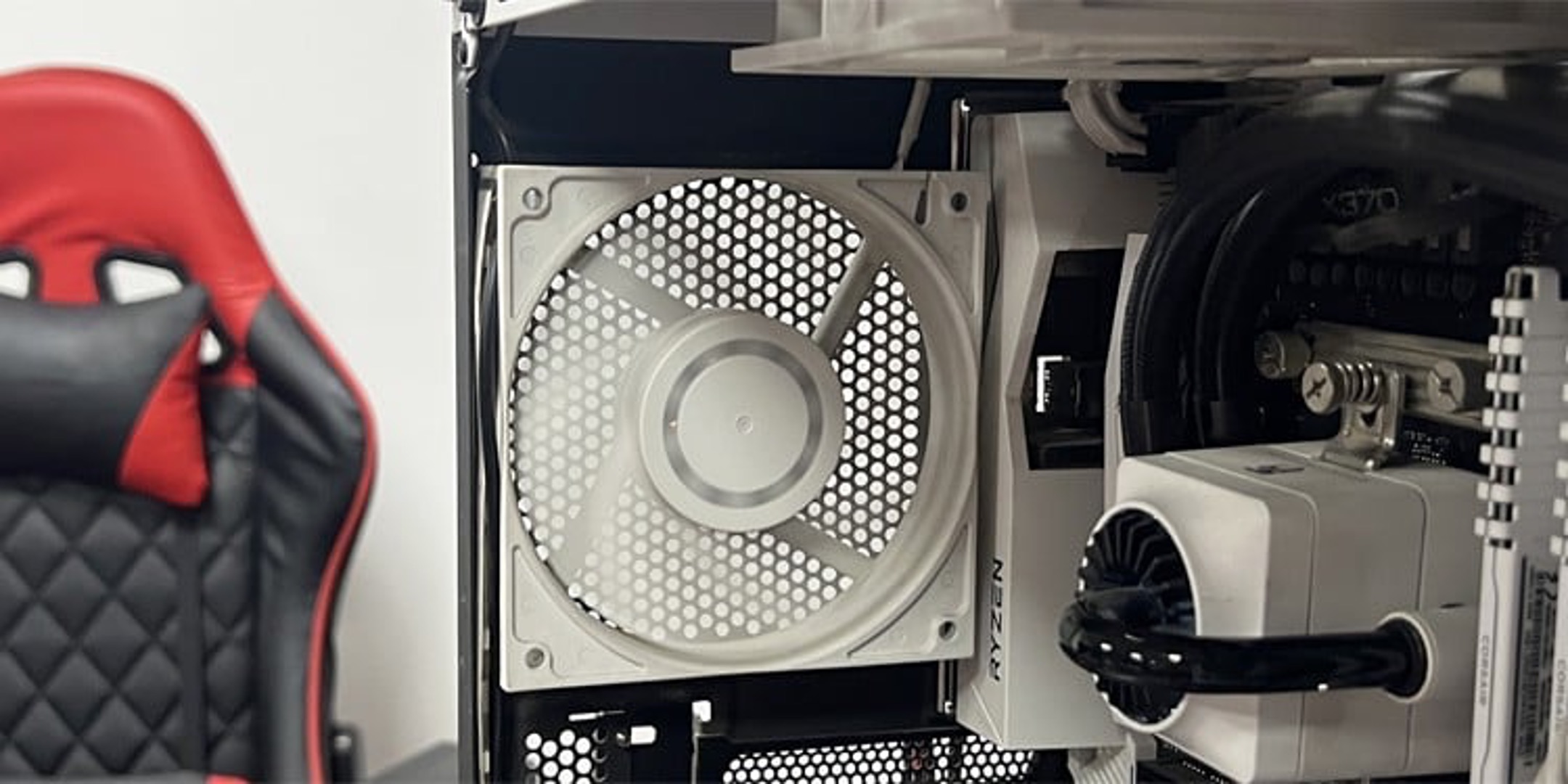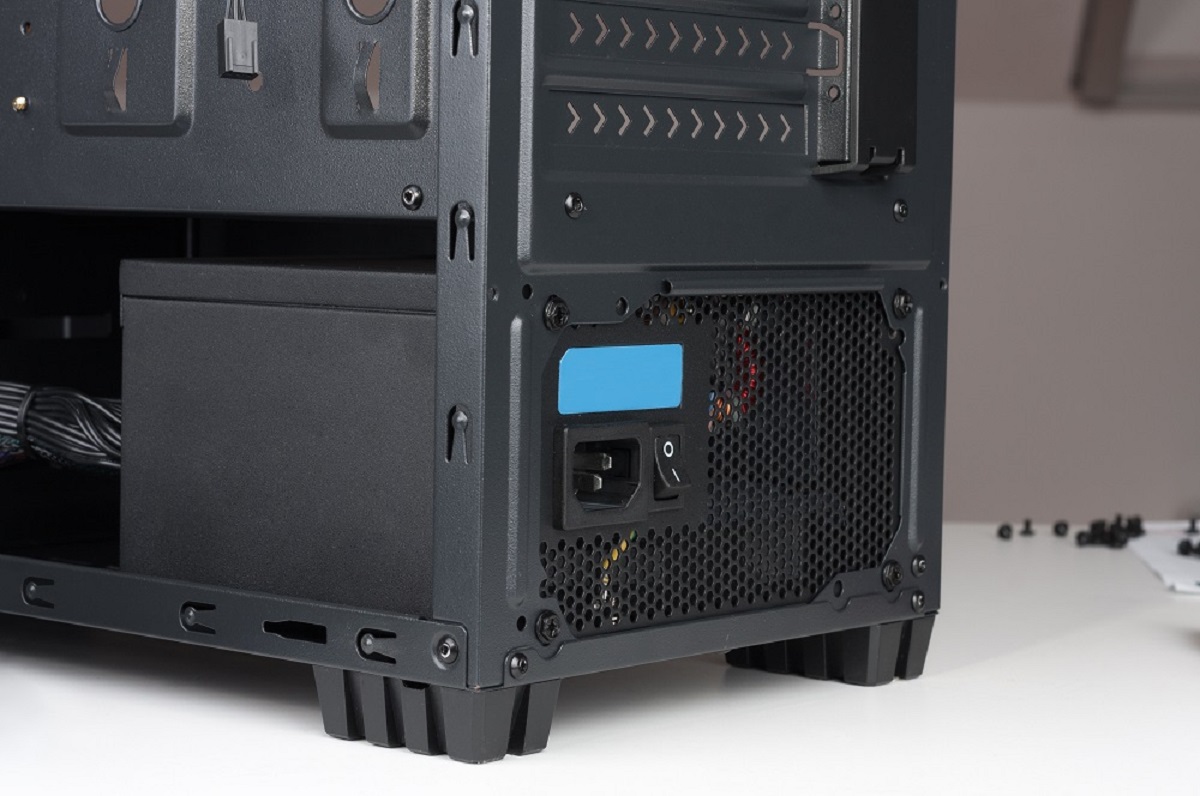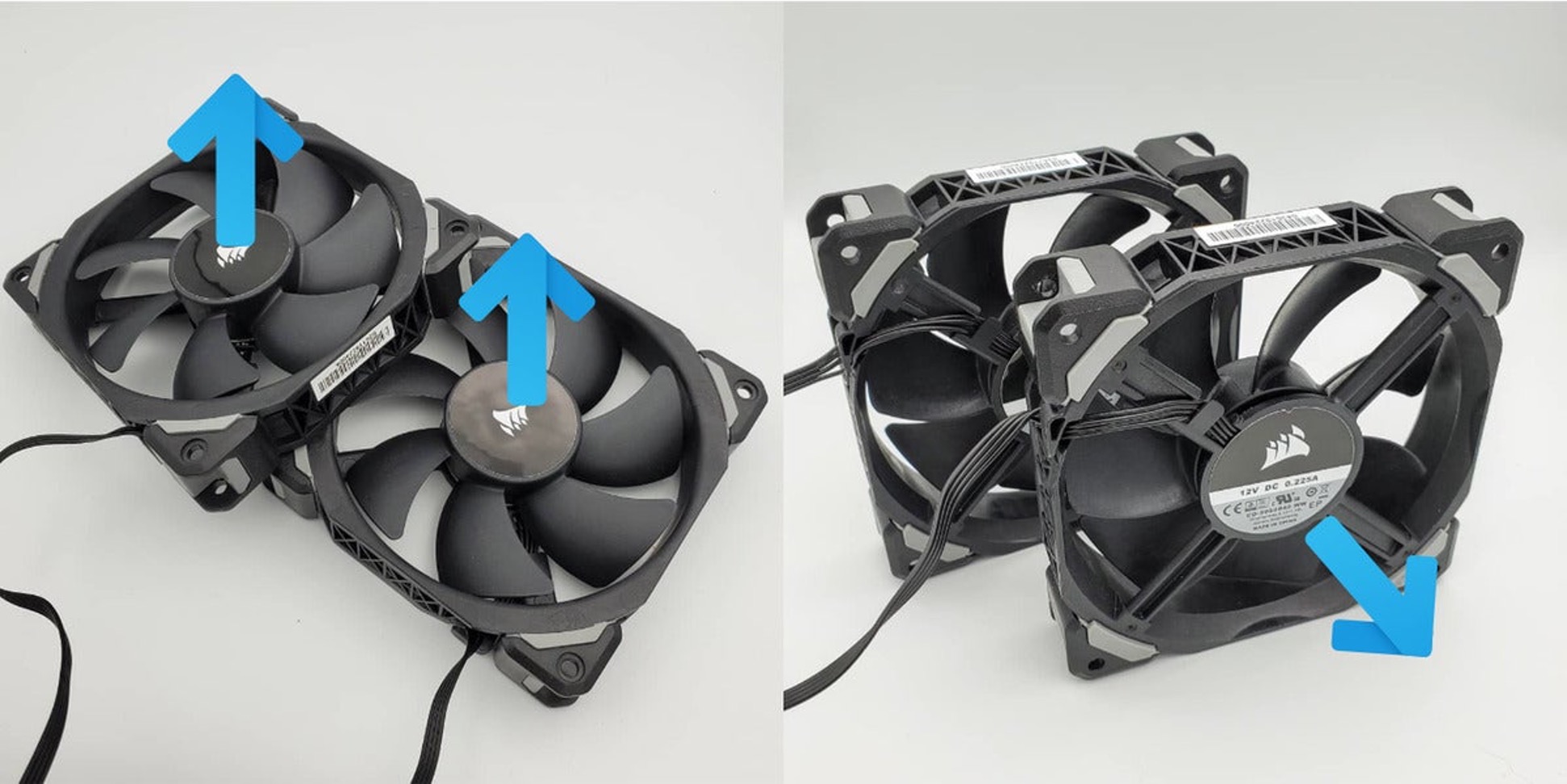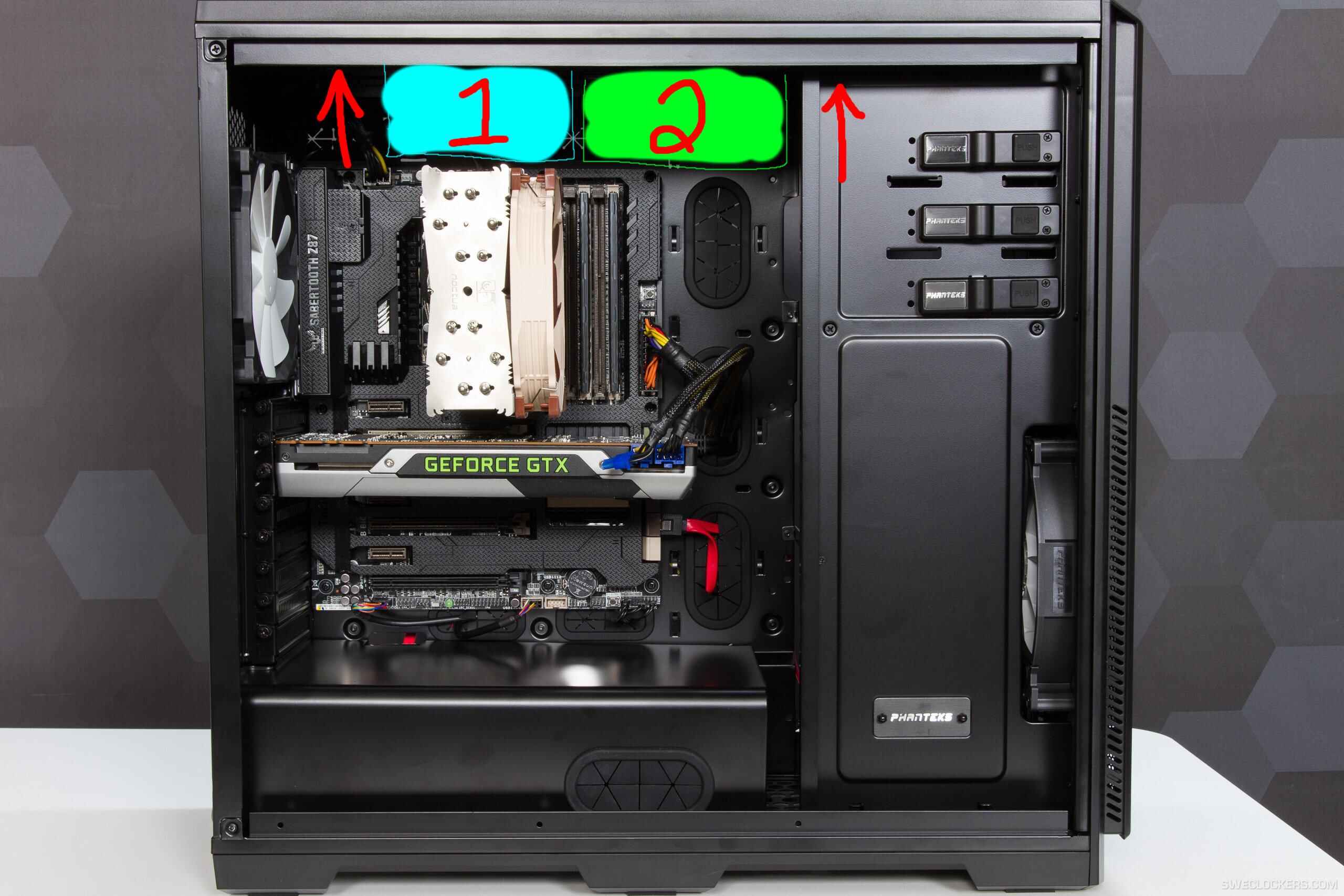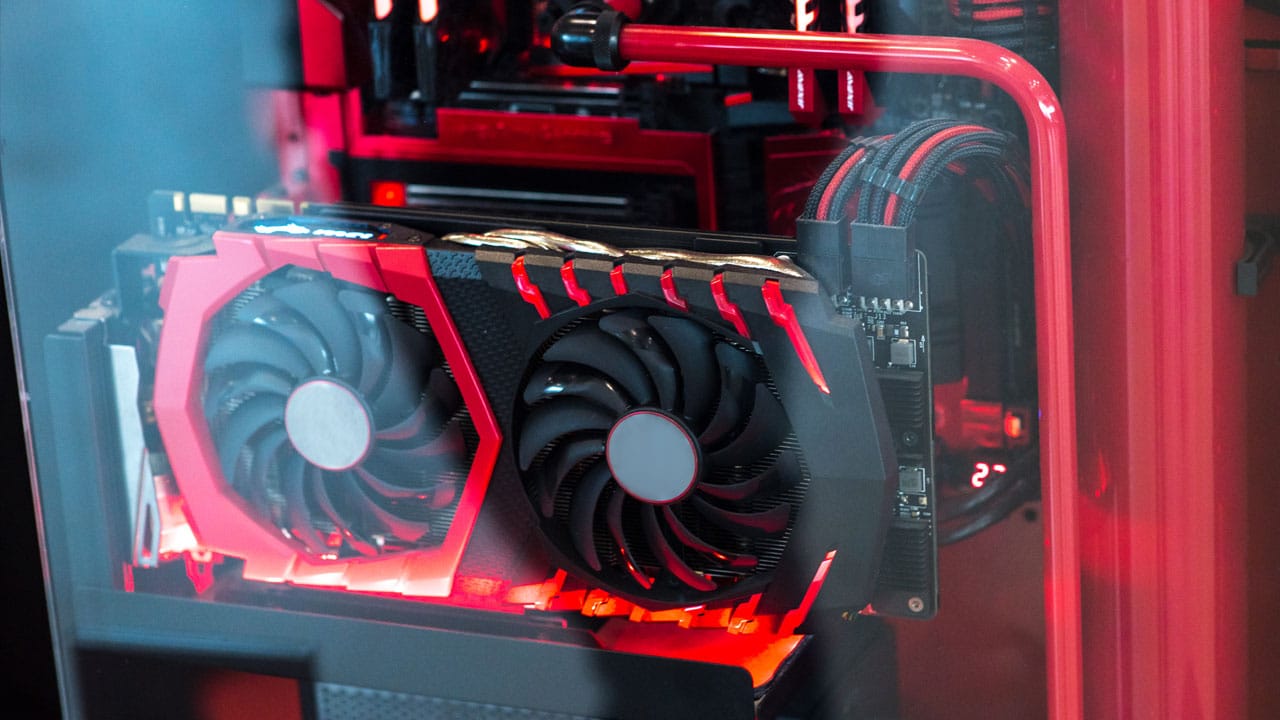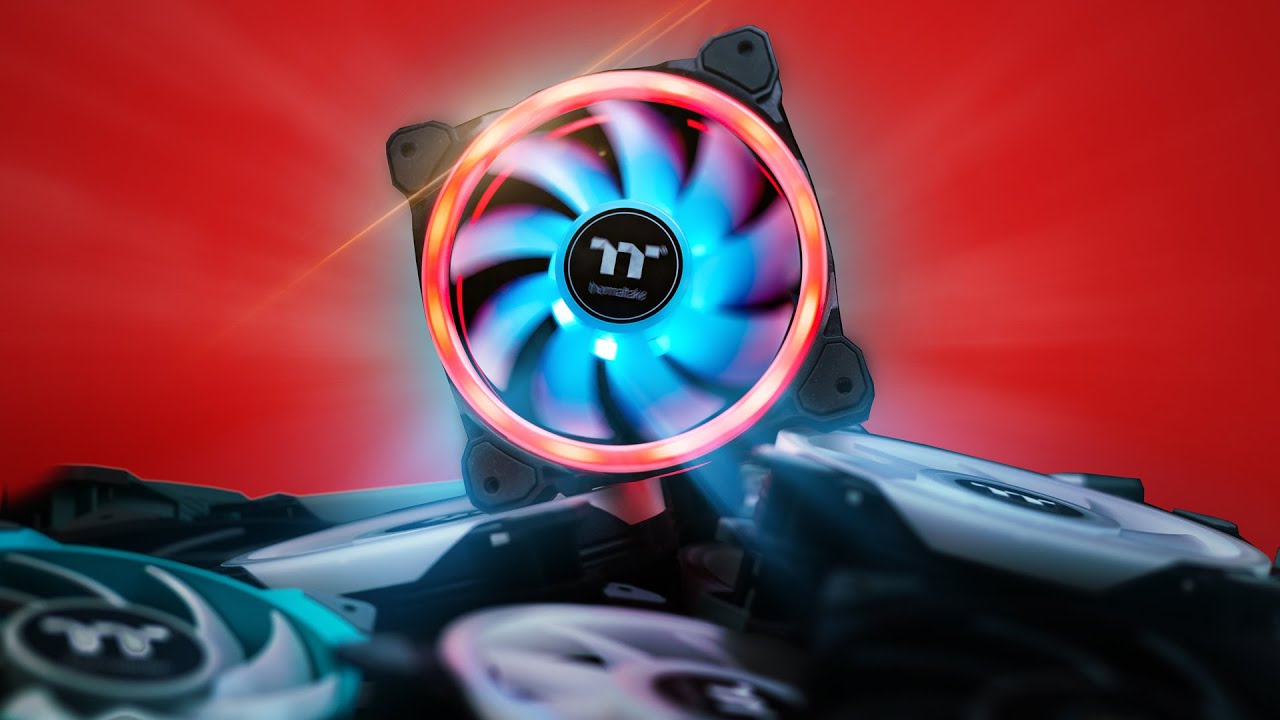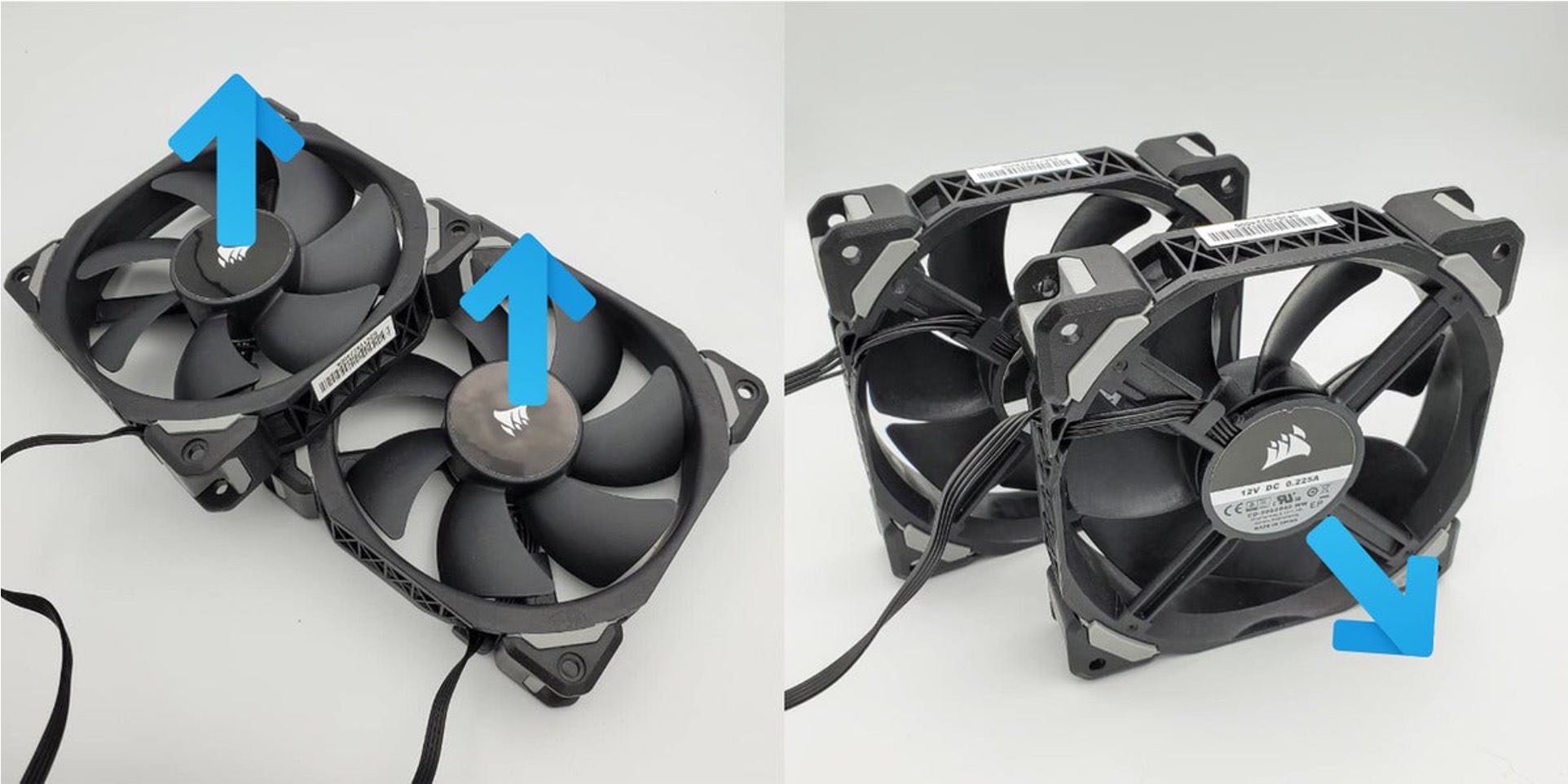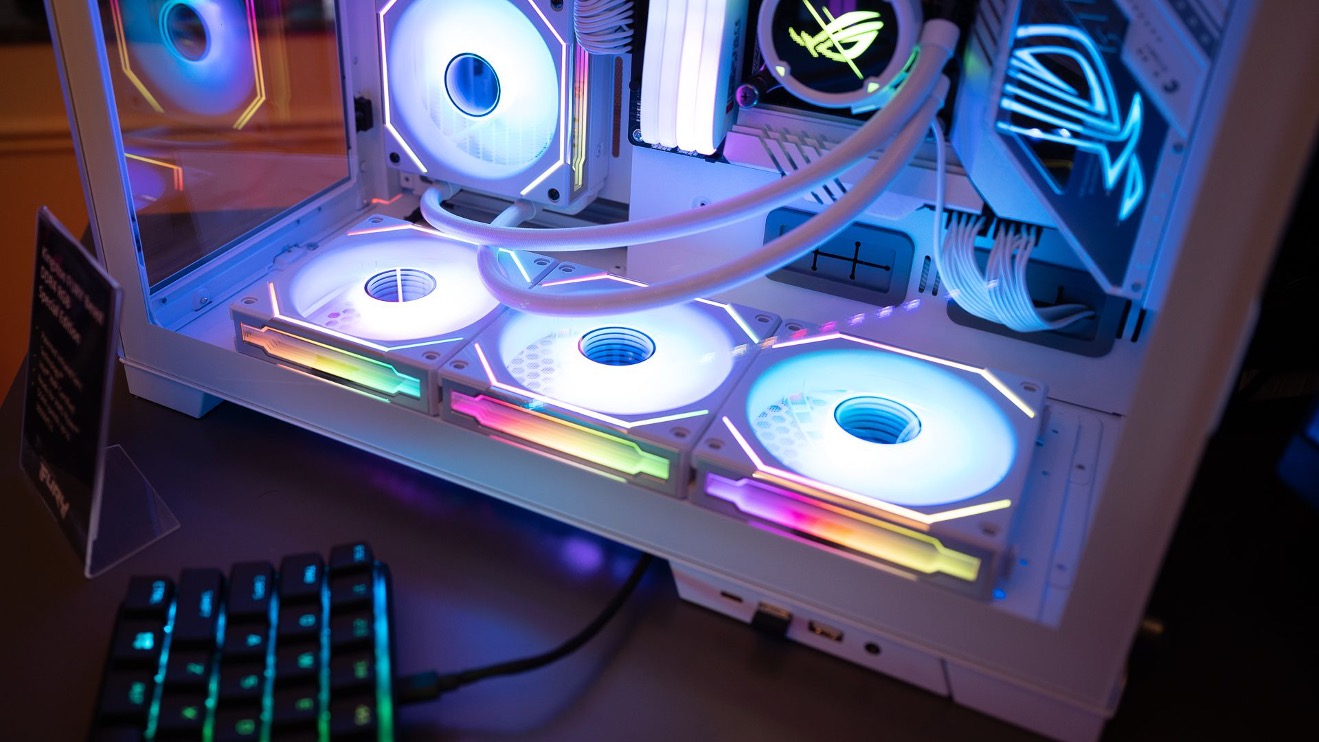Introduction
Welcome to the world of PC cooling, where every little detail can make a big difference in the performance and longevity of your computer. One crucial aspect of maintaining optimal temperatures inside your computer case is the correct orientation of your case fans. But why is the direction of the case fan important, and how does it affect the overall cooling performance?
When it comes to cooling your PC components, the general rule of thumb is that air should flow in one direction, from the front to the back of the case. This airflow helps in dissipating heat generated by the CPU, GPU, and other components, preventing them from overheating. Case fans play a key role in facilitating this airflow by either pushing or pulling air through the case, depending on their orientation.
There are different types of case fans available on the market, including front intake fans, rear exhaust fans, top exhaust fans, and side intake or exhaust fans. Each type has its specific role in maintaining a well-ventilated and properly cooled system.
Determining the correct direction for your case fan largely depends on its placement in the case. For example, front intake fans are positioned at the front of the case and usually draw cool outside air into the case. Rear exhaust fans, on the other hand, are located at the back of the case and expel hot air from inside the case outwards.
Some enthusiasts also opt for top exhaust fans, which help in getting rid of hot air that tends to rise to the top of the case. Side intake or exhaust fans can be used to direct airflow towards specific components, such as the graphics card or CPU cooler.
But does the direction of the case fan really make a significant difference in cooling performance? The answer is yes. Proper airflow management ensures that cool air reaches the components that generate the most heat, while hot air is efficiently expelled from the case. This improves overall system stability, prevents thermal throttling, and prolongs the lifespan of your components.
Now that we understand the importance of correct fan direction, let’s delve deeper into determining the appropriate orientation for different types of case fans, and some helpful tips for installing them properly.
Why is the direction of the case fan important?
The direction of the case fan is crucial for maintaining optimal airflow and proper cooling inside your computer case. Without proper airflow, components can overheat, which can lead to reduced performance, system instability, and even damage to your hardware.
When the case fan is correctly positioned, it helps in creating a steady flow of air throughout the case, ensuring that cool air is brought in and hot air is expelled efficiently. This prevents hot spots from forming and allows your components to operate within their recommended temperature range.
If the case fan is not installed in the right direction, it can disrupt the airflow or even cause air to circulate in the wrong direction. For example, if an intake fan is facing the wrong way, it could push hot air back into the case instead of drawing in cool air. Similarly, if an exhaust fan is facing the wrong way, it might struggle to expel hot air effectively, leading to a buildup of heat inside the case.
Proper airflow management is especially crucial for high-performance systems and those with overclocked components. These systems generate more heat, and without adequate cooling, they are at higher risk of overheating. By ensuring that the case fans are correctly oriented, you can optimize the cooling performance and maintain a stable operating temperature for your PC.
Additionally, the direction of the case fan can also affect the overall acoustics of your system. When fans are improperly positioned, they can create noise or turbulence, leading to a louder operating environment. By aligning the fans correctly and promoting smooth airflow, you can potentially reduce noise levels and enjoy a quieter computing experience.
It’s important to note that the correct fan orientation may vary depending on the specific case design and configuration. Manufacturers often provide guidelines or markings on the case itself to indicate the recommended direction for each fan. It’s worth checking these guidelines and following them to ensure your system benefits from proper airflow.
In the next sections, we will explore the various types of case fans and discuss how to determine the correct orientation for each of them, giving you the knowledge and confidence to optimize your PC cooling setup.
Different types of case fans
Case fans come in various sizes and configurations, each serving a specific purpose in maintaining proper airflow and cooling inside your computer case. Understanding the different types of case fans will help you make informed decisions when it comes to selecting and installing them.
1. Front intake fans: These fans are typically located at the front of the case and draw cool air from the outside into the case. They help in providing fresh air to the components, especially the graphics card, CPU, and RAM modules closest to the front. Front intake fans often have filters to prevent dust and debris from entering the case, ensuring cleaner air circulation.
2. Rear exhaust fans: Positioned at the back of the case, these fans expel hot air from inside the case. They work in conjunction with front intake fans to create a steady flow of air through the system. Rear exhaust fans help in removing the hot air generated by the CPU, GPU, and other components, effectively preventing heat buildup.
3. Top exhaust fans: As the name suggests, these fans are located at the top of the case and are primarily used to expel hot air that naturally rises within the case. They can help in maintaining a balanced temperature throughout the system and prevent hot air from accumulating at the top of the case.
4. Side intake or exhaust fans: Some cases feature additional fan mounts on the side panel. These fans can be used to direct airflow towards specific components, such as the graphics card or CPU cooler. They can also be positioned as exhaust fans to remove hot air from specific areas within the case.
When selecting case fans, it’s important to consider factors such as noise levels, airflow capacity (measured in cubic feet per minute or CFM), and static pressure (measured in millimeters of water or mmH2O). Higher CFM and static pressure values generally indicate better cooling performance, but it’s essential to balance this with the desired noise levels for your system.
Some case fans also come with additional features such as PWM (Pulse Width Modulation) or RGB lighting, allowing for more precise fan control or customization options. These features can enhance the aesthetics and functionality of your PC, but they are optional and depend on personal preference.
Now that we have explored the different types of case fans, let’s move on to the next section, where we will discuss how to determine the correct direction for each type of case fan, ensuring optimal cooling performance for your PC.
Determining the correct direction for your case fan
Setting up the direction of your case fans correctly is crucial for effective cooling. It ensures that cool air is directed towards the components that generate the most heat, while hot air is efficiently expelled from the case. Here’s how you can determine the correct direction for different types of case fans:
1. Front intake fans: These fans should be positioned to draw cool air from outside the case and blow it inward. The correct orientation is to have the fan facing towards the inside of the case, towards the components that require cooling. The airflow should be directed over components such as the CPU, GPU, and RAM, providing them with fresh, cool air.
2. Rear exhaust fans: These fans should be oriented to push hot air out of the case. The correct setup is to have the fan facing towards the outside of the case, expelling the hot air generated by the components inside. This helps in maintaining a balanced airflow and preventing heat buildup.
3. Top exhaust fans: The direction of these fans depends on the specific case design. Some cases have top-mounted exhaust fans that should be positioned to blow hot air out of the case. Others have top-mounted intake fans that draw cool air into the case. It’s best to consult the case manual or manufacturer specifications to determine the recommended orientation for top fans.
4. Side intake or exhaust fans: The direction of these fans depends on their placement and the specific cooling needs of your system. If positioned as intake fans, they should be placed to draw cool air towards specific components that require additional cooling, such as the graphics card or CPU cooler. If positioned as exhaust fans, they should be placed to expel hot air from specific areas of the case.
It’s important to note that some fans have directional arrows on their frames, indicating the airflow direction. In case of confusion, referring to these arrows can be helpful. Additionally, many modern motherboards and fan controllers allow you to control the fan speed and direction through software, further simplifying the process of setting up the correct fan orientation.
Remember to consider the overall airflow configuration of your case when determining the direction for each fan. Establishing a coherent and efficient path for the airflow will maximize cooling performance and minimize any potential disruptions or turbulence.
Now that you know how to determine the correct direction for your case fans, let’s explore whether the fan direction can actually affect cooling performance.
Does the direction of the case fan affect cooling performance?
The direction of the case fan plays a crucial role in determining the cooling performance of your computer system. Correctly orienting the fans ensures efficient airflow management, which translates to better cooling and improved overall performance. Here are a few reasons why the direction of the case fan affects cooling performance:
1. Airflow optimization: Having the case fans positioned correctly helps in creating an optimized airflow path inside the case. This ensures that cool air is directed towards the components that generate the most heat, such as the CPU and GPU, while hot air is effectively expelled from the case. By establishing this proper airflow pattern, you can avoid hot spots, reduce temperature differentials, and maintain consistent cooling throughout the system.
2. Heat dissipation: The primary purpose of case fans is to dissipate heat. By expelling hot air and bringing in fresh, cool air, the fans aid in removing the heat generated by the components. If the fans are not oriented correctly, they may disrupt the natural flow of air or cause air to circulate in the wrong direction, leading to inefficient cooling. Ensuring the fans are correctly positioned allows for the most effective heat dissipation and helps keep temperatures within safe limits.
3. Component longevity: Proper cooling is essential for the longevity of your PC components. High temperatures can shorten the lifespan of vital components such as the CPU and GPU, leading to reduced stability and performance. By directing cool air towards these components and expelling hot air efficiently, you can help maintain lower operating temperatures and extend the lifespan of your hardware.
4. Noise reduction: Incorrectly positioned fans can lead to increased noise levels and turbulence within the system. This can be due to the fans working harder to push or pull air in the wrong direction, causing vibrations and increased noise output. Proper fan orientation helps in promoting smoother airflow, reducing turbulence, and ultimately contributing to a quieter computing experience.
It’s important to note that while the direction of the case fan significantly impacts cooling performance, it is only one aspect of an effective cooling strategy. Other factors, such as fan speed, the number of fans, the case design, cable management, and the presence of dust filters, also play a role in maintaining optimal temperatures inside your PC.
By considering all these factors and ensuring the correct direction for your case fans, you can maximize cooling performance and create an environment that promotes the long-term health and stability of your computer system.
Next, let’s explore some tips for proper case fan installation to help you optimize the cooling performance of your PC.
Tips for proper case fan installation
Proper case fan installation is crucial to ensure optimal cooling performance and system stability. By following these tips, you can set up your case fans correctly and maximize their effectiveness:
1. Consult the case manual: Before installing case fans, refer to the case manual or manufacturer’s specifications. They often provide guidelines or markings indicating the recommended fan configuration and orientation. Following these guidelines will ensure compatibility and optimal airflow within your specific case model.
2. Balance intake and exhaust: Aim for a balanced airflow configuration by maintaining an equal number of intake and exhaust fans. This helps in creating a consistent flow of fresh air while efficiently expelling hot air. Remember that a positive pressure setup (more intake fans than exhaust fans) can help minimize dust buildup inside the case.
3. Position strategically: Place intake fans at the front or side of the case to draw in fresh air, while exhaust fans should be situated at the back or top to expel hot air. Positioning fans near components that generate the most heat, such as the CPU and GPU, can help in targeted cooling and prevent thermal throttling.
4. Consider fan configuration: Depending on the case design and available fan mounts, you can opt for various fan configurations. For example, creating a “push-pull” setup with fans on opposite sides of a heat sink or radiator can enhance cooling efficiency. Experiment with different configurations based on your specific needs and hardware setup.
5. Manage cables: Maintain good cable management to ensure optimal airflow inside the case. Tidy up cables and secure them away from fans to prevent any obstruction that could impede airflow or cause unnecessary vibrations that add noise. Consider using cable ties, zip ties, or cable management solutions for a clean and organized setup.
6. Clean regularly: Dust accumulation on case fans can hinder their performance and reduce airflow. Regularly clean the fans to remove dust and debris using compressed air or a soft brush. This helps in maintaining proper cooling performance and prevents overheating due to clogged fan blades.
7. Test and monitor: After installing case fans, monitor the temperatures of your components using software tools or BIOS settings. Keep an eye on the CPU, GPU, and motherboard temperatures to ensure they are within safe operating ranges. If you notice high temperatures or inadequate cooling, it may be necessary to adjust fan speeds, configurations, or add additional fans.
By implementing these tips, you can ensure that your case fans are installed correctly and optimized for cooling performance. Remember to regularly maintain and monitor your fan setup to keep your system running cool and efficiently.
Now that we’ve covered the tips for proper case fan installation, let’s conclude with a recap of the importance of fan direction and airflow management in PC cooling.
Conclusion
Proper case fan orientation and installation are essential for effective cooling and optimal performance of your computer system. By understanding the importance of fan direction and following these guidelines, you can create a well-ventilated and efficiently cooled PC. Here are the key takeaways:
– The direction of the case fan plays a crucial role in maintaining optimal airflow and preventing heat buildup inside the computer case.
– Different types of case fans, such as front intake, rear exhaust, top exhaust, and side intake or exhaust fans, have specific roles in cooling your system.
– Determining the correct orientation for each type of case fan ensures that cool air is directed towards components that generate the most heat, while hot air is efficiently expelled.
– The direction of the case fan can affect cooling performance, component longevity, and noise levels within the system.
– Proper case fan installation involves consulting the case manual, balancing intake and exhaust fans, strategically positioning fans, managing cables for good airflow, regularly cleaning fans, and testing and monitoring temperatures.
By following these tips and guidelines, you can optimize the cooling performance of your PC, prevent overheating, improve stability, and prolong the lifespan of your components.
Remember, effective cooling is a combination of factors, including proper fan direction, adequate fan speed, case design, cable management, and dust management. Finding the right balance and maintaining regular upkeep will ensure that your PC stays cool, quiet, and reliable.
So, take the time to assess your current fan setup, make any necessary adjustments, and enjoy the benefits of a well-cooled and efficiently functioning PC.







